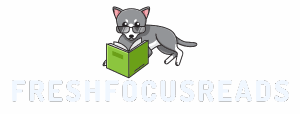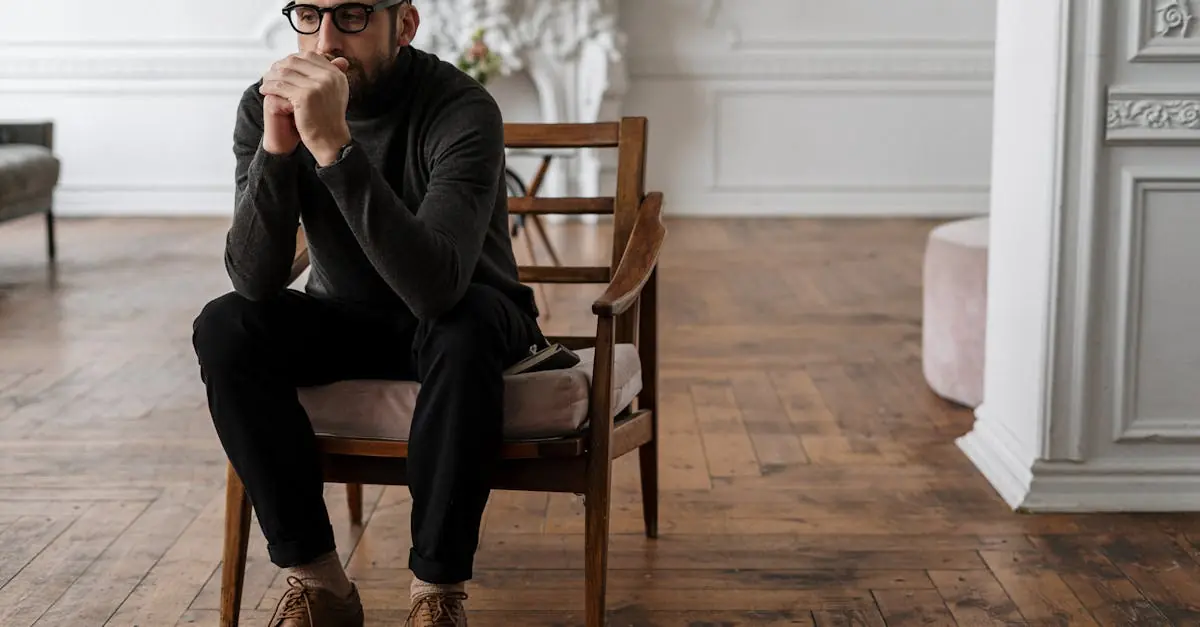When it comes to thinking, most people aim for the creative high road, where ideas flow like a river of inspiration. But what happens when someone takes a detour down the winding path of unoriginality? Welcome to the world of non-creative thinking, where the only thing more predictable than a Monday morning is the lack of imagination.
In this realm, brainstorming sessions feel more like snooze-fests, and innovation is as rare as a unicorn sighting. It’s where cookie-cutter solutions reign supreme and thinking outside the box is strictly prohibited. Buckle up as we explore the quirks and pitfalls of non-creative thinking, and discover why embracing creativity might just be the best decision anyone can make.
Table of Contents
ToggleDefining Creative Thinking
Creative thinking involves the ability to generate original ideas and see connections where others might not. It encourages exploration, innovation, and flexibility in thought processes. Individuals engaging in creative thinking often challenge conventional patterns, leading to unique solutions and effective problem-solving.
Imagination plays a crucial role in creative thinking. One might visualize possibilities beyond the immediate and the obvious. When individuals think creatively, they often draw from diverse experiences and knowledge to inspire their ideas, leading to rich collaborations and inventive concepts.
Flexibility is also important in creative thinking. Adapting ideas based on new information or feedback encourages growth and change. This adaptability allows for the effective merging of different perspectives, resulting in outcomes that are both innovative and functional.
A key aspect of creative thinking is its capacity to foster resilience. When faced with obstacles, creative thinkers often approach challenges with a mindset that emphasizes learning and improvement. The focus shifts from merely avoiding mistakes to embracing them as opportunities for growth.
Ultimately, creative thinking drives progress in various fields. Many companies prioritize this type of thinking to maintain competitive advantages and inspire teams. By fostering a culture that values creativity, organizations enable a continuous flow of ideas, leading to increased motivation and enthusiasm among team members.
Understanding the Opposite of Creative Thinking
Non-creative thinking significantly limits innovation. This type of thinking is characterized by rigid adherence to established norms and reliance on standard solutions.
Characteristics and Traits
Non-creative thinkers rely on familiar methods. They often exhibit resistance to new ideas and solutions. Predictability defines their approach, leading them to favor traditional answers over innovative options. Fear of failure frequently hampers their willingness to explore alternatives. As a result, they generally avoid risk, missing opportunities for growth. Conventional thinking patterns dominate their mindset, preventing them from seeing beyond the obvious.
Examples in Various Contexts
In corporate settings, reliance on non-creative thinking produces uninspired marketing strategies. Routine procedures in project management often lead to stagnant results when innovation is necessary. Educational environments that discourage creativity foster disengagement among students. In healthcare, adhering strictly to established protocols may inhibit breakthroughs in patient care. These examples illustrate how non-creative thinking stifles potential across various fields, highlighting the importance of embracing creativity for success.
The Role of Critical Thinking
Critical thinking serves as an essential counterpart to creative thinking. It focuses on analyzing and evaluating information logically. This approach emphasizes finding solutions through structured reasoning and communication.
Comparison with Creative Thinking
Critical thinking differs from creative thinking in process and outcome. While creative thinkers explore innovative ideas, critical thinkers assess their validity and practicality. Critical thinking emphasizes clarity and logic, whereas creative thinking encourages imagination and exploration. Non-creative thinkers often rely on standard solutions, neglecting the analytical processes that critical thinkers employ. An integrated approach to both thinking styles fosters comprehensive problem-solving and enriches the creative process.
Benefits of Critical Thinking
The benefits of critical thinking are significant. It promotes better decision-making by ensuring that choices are based on solid rationale. Individuals learn to evaluate evidence critically, which leads to informed conclusions. With improved analytical skills, collaboration increases as team members share and critique ideas effectively. Additionally, this approach enhances adaptability, enabling individuals to navigate complex situations better. In professional settings, companies that foster critical thinking develop innovative strategies, mitigate risks, and navigate challenges effectively.
Impacts on Innovation and Problem-Solving
Non-creative thinking significantly impacts innovation and problem-solving capabilities. Organizations relying on conventional methods often struggle to produce innovative solutions. The tendency to focus on standard answers limits opportunities for groundbreaking ideas.
In corporate environments, non-creative thinking leads to predictable marketing strategies. Employees often experience repetitive brainstorming sessions, which stifles enthusiasm and restricts engagement. An inclination towards cookie-cutter solutions yields uninspired project outcomes.
Educational settings also suffer from non-creative approaches. Rigid adherence to outdated teaching methods hampers students’ critical thought development. This limit on creative exploration prevents learners from discovering unique solutions to complex problems.
Healthcare innovation faces similar challenges. Non-creative thinking can delay advancements in treatment options. By sticking to established protocols, professionals may overlook potential improvements that could benefit patient care.
The absence of creative thinking reduces flexibility in problem-solving. Adaptability is essential in rapidly changing industries, where creative ideas provide competitive advantages. Companies that cultivate an environment encouraging creative exploration thrive amidst uncertainty.
Integrating creative and critical thinking enhances overall problem-solving processes. Critical thinking evaluates ideas for feasibility and effectiveness while creative thinking generates those ideas. This synergy promotes comprehensive solutions to complex challenges.
Furthermore, organizations fostering both thinking styles experience increased collaboration. Diverse perspectives lead to richer discussions and more inventive strategies. As companies embrace innovative mindsets, they position themselves at the forefront of industry advancements.
Embracing creative thinking is crucial for fostering innovation and overcoming the limitations posed by non-creative thought. Organizations that cling to conventional methods risk stagnation and uninspired outcomes. By encouraging a culture that values both creativity and critical thinking, they can unlock new possibilities and drive progress.
The interplay between these two thinking styles enhances problem-solving capabilities and promotes collaboration. As industries evolve, the ability to adapt and innovate becomes increasingly important. Prioritizing creative thinking not only leads to unique solutions but also cultivates an environment where teams feel empowered to explore and experiment. In the end, choosing creativity is choosing growth and success in a dynamic world.

